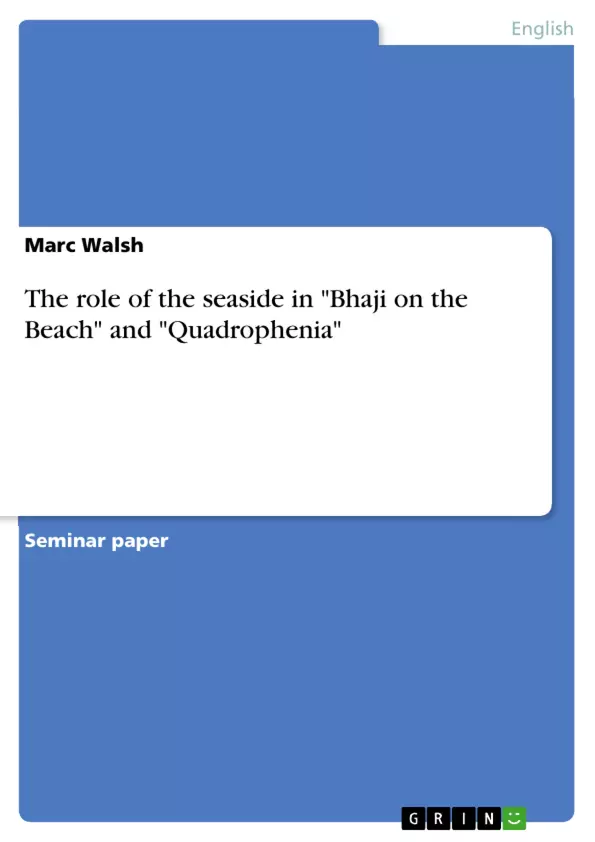In this essay I will discuss the way a trip to the sea is represented in Quadrophenia (the album by The Who with the accompanying short story, as well as the non-musical film of the same name) and in Gurinder Chadha’s film Bhaji on the Beach. I will argue that while the seaside of the story, music and the two films may be one that appeals to the characters because of its potential for a collective, enjoyable experience that can blur individual identities and anxieties, in fact the seaside that is represented produces conflict and may serve to challenge or renew identities.
Inhaltsverzeichnis (Table of Contents)
- The Seaside and the Crowd Experience
- The Seaside Resort: A Shared Experience
- The Seaside as an Escape
- Negotiating Identities at the Seaside
- The Seaside as a Site of Conflict and Renewal
Zielsetzung und Themenschwerpunkte (Objectives and Key Themes)
This essay examines how the seaside is represented in two distinct works: Quadrophenia, a multi-media project by The Who, and Gurinder Chadha's film Bhaji on the Beach. The essay argues that while the seaside is often depicted as a site for collective, enjoyable experiences that can blur individual identities, it actually serves to highlight and exacerbate existing conflicts and tensions.
- The seaside as a site of collective experience
- The seaside as an escape from everyday reality
- The role of identity in shaping individual experiences at the seaside
- The seaside as a catalyst for conflict and renewal
- The complexities of cultural hybridity at the seaside
Zusammenfassung der Kapitel (Chapter Summaries)
- The essay begins by exploring the historical development of the seaside resort and its association with shared experiences and collective identity. The essay discusses how filmmakers draw on this imagery to create a sense of familiarity and recognition for audiences.
- The essay then focuses on the ways in which the seaside is portrayed as an escape from everyday problems and concerns. It examines how the characters in both Quadrophenia and Bhaji on the Beach view the seaside as a chance to break free from their daily routines and have fun.
- The essay then delves into the complexities of identity and the ways in which the seaside can serve to both unify and divide individuals. It explores the experiences of the women in Bhaji on the Beach, who find themselves grappling with issues of race, gender, and cultural identity.
- The essay concludes by examining how the seaside becomes a site of conflict and renewal for the characters in both works. It explores the ways in which the characters are forced to confront different aspects of their identities and ultimately emerge with a re-assessed and clearer sense of self.
Schlüsselwörter (Keywords)
This essay explores the themes of collective experience, identity negotiation, cultural hybridity, and the seaside as a site of conflict and renewal. The works analyzed include Quadrophenia, a multi-media project by The Who, and Gurinder Chadha's film Bhaji on the Beach.
- Quote paper
- Marc Walsh (Author), 2015, The role of the seaside in "Bhaji on the Beach" and "Quadrophenia", Munich, GRIN Verlag, https://www.grin.com/document/343807



